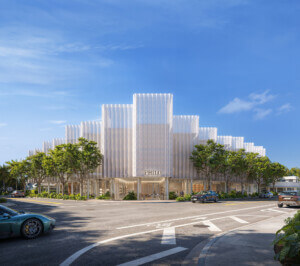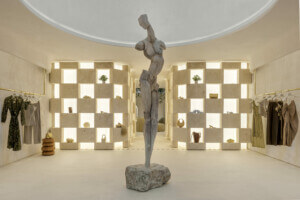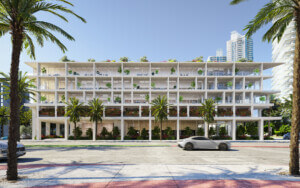This article appears in The Architect’s Newspaper’s April 2017 issue, which takes a deep dive into Florida to coincide with the upcoming AIA Conference on Architecture in Orlando (April 27 to 29). We’re publishing the issue online as the Conference approaches—click here to see the latest articles to be uploaded.
A native Floridian, Allan Shulman grew up in Fort Lauderdale, completed his postgraduate studies at the University of Miami, and has since settled in Miami. It’s no surprise then that he describes his firm, Shulman & Associates, formed in 1996 with wife Rebecca Stanier-Shulman, as a “regional design studio” (emphasis on studio).
Shulman though, draws influence from a variety of locations, all urban: New York and Paris—he worked briefly in both—and Tokyo, where he studied for a year at Waseda University while taking a break from his undergraduate program at Cornell.
Shulman’s main focus, however, is Miami Beach, a city that has been at the forefront of his academic interests and throughout his career as an architect and professor of architecture at the University of Miami. With the Nolli Map in one hand and new urbanist principles in the other, Shulman described the city as the “perfect laboratory” for learning how to “use typologies as a basis for new design ideas.”
A fascination with public space and semi-private networks, as well as an engagement with the urban environment are defining aspects of Shulman’s approach to work. “We start by thinking about how we can expand, engage, and integrate into the public space and existing networks,” he said. “We always try find one or more elements of the project that achieves that.”
Betsy-Carlton Hotel
1440 Ocean Drive, Miami
Bridging the 1938 art deco Henry Hohauser hotel to its new addition by Shulman is a silver sphere that disguises a pedestrian connection between the two buildings. The elliptical enigma transforms one of the many circulation arteries that run through the building’s site into public art. A cafe extension on the building’s side has the same impact: Triangular in plan, the cafe enhances the east-west alleyway that takes pedestrians from Española Way to the ocean by utilizing a landscaped roof deck as an amphitheater for poetry, also aligning with the hotel’s historic mission of cultural programming.
Billboard Building
3704 Northeast 2nd Avenue, Miami
A pertinent example of Shulman’s philosophy can be seen in the Billboard Building in Miami’s Design District. Situated roughly 10 feet away from the elevated I-195 that heads to Miami Beach, the project sees a three-story 1920s commercial building joined to a sleek 90-foot-tall addition.
Cabana Bay Beach Resort
Universal, Orlando
The 1,200-key hotel employs a post-war aesthetic prescribed by Universal Orlando Resort. “As architects, the challenge was to make the language feel new again and to avoid being purely retro,” said Shulman. A central plaza-pool deck (once a necessity for the post-war vacationing class) is enlivened by amenities such as play and picnic areas, ping pong tables, and sand pits. Children can play as parents monitor from their balconies, all of which look into the space.
Jugofresh Wynwood Walls
Wynwood, Miami
Located in the warehouse complex of Wynwood Walls—an area that features a coterie of industrial buildings covered in murals—is an outlet for juice and food bar Jugofresh. Sacrificing space to the public, Shulman proposed opening up two garage doors at either end of the building to activate a plaza once blocked from the street. A folding glass wall blurs boundaries further and creates a “breezeway” that features a wall of fans—an alternative Shulman pursued to avoid air conditioning the space. Jugofresh now uses the wide floor plan to host yoga classes and other activities. Inside, almost every shade of green abounds, employing a color palette as vibrant as its exterior (which couldn’t
be changed).










